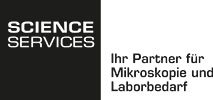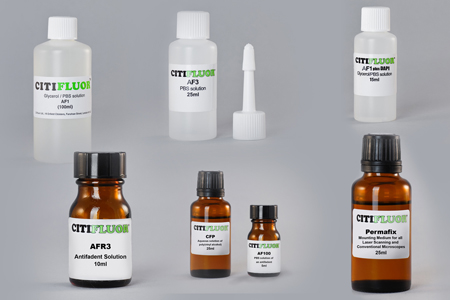Introduction to Citifluor´s Mounting Medias
Citifluor Ltd. specializes in making products that reduce photo-bleaching or fading of fluorescent dyes used for labeling biological species. The fading of fluorochromes is a particular problem in fluorescence microscopy, such as in immunofluorescence studies. Fluorescent dyes are also used as cell markers, following the uptake and release of ions from cells, e.g. calcium imaging, for characterizing cell surfaces. For working at high magnification where image integrity is of importance, our unique high refractive index mountants are especially useful.
In fluorescence microscopy, the fluorescence is stimulated by high intensity UV or visible light. Absorption of the light populates an excited state of the dye (usually a singlet state) and this leads to fluorescence. However, the excited state of the dye may undergo chemical reactions, which leads to its destruction as evidenced by the fading or bleaching of the fluorescence and consequent loss of the image or in the case of assays, a variation of signal intensity with time.
To overcome these problems Citifluor Ltd. developed antifading (antibleaching) solutions for use as mounting media when specimens are examined by fluorescent microscopy or other detection systems and as additives for assays.
The most frequently used solution is AF1, which is an antifadent (antibleaching agent) contained in a glycerol PBS (phosphate-buffered saline) solution and is particularly useful for examining tissue sections.
AF2 solution contains the antifadent in glycerol, which enables users to choose their own buffer, and AF3 is the antifadent in PBS solution. AF3 is particularly useful for examining live cells.
AF87 is a non fluorescent immersion oil containing antifadent. CFPVOH is an aqueous solution of poly(vinyl alcohol) for use as a solid mountant. AF100 is a solution of antifadents (anti bleaching agents) for use with CFPVOH when fading (bleaching) of specimens in a solid mountant is a problem.
None of the antifadents is based on p-phenylenediamine. All solutions may be stored at room temperature.









